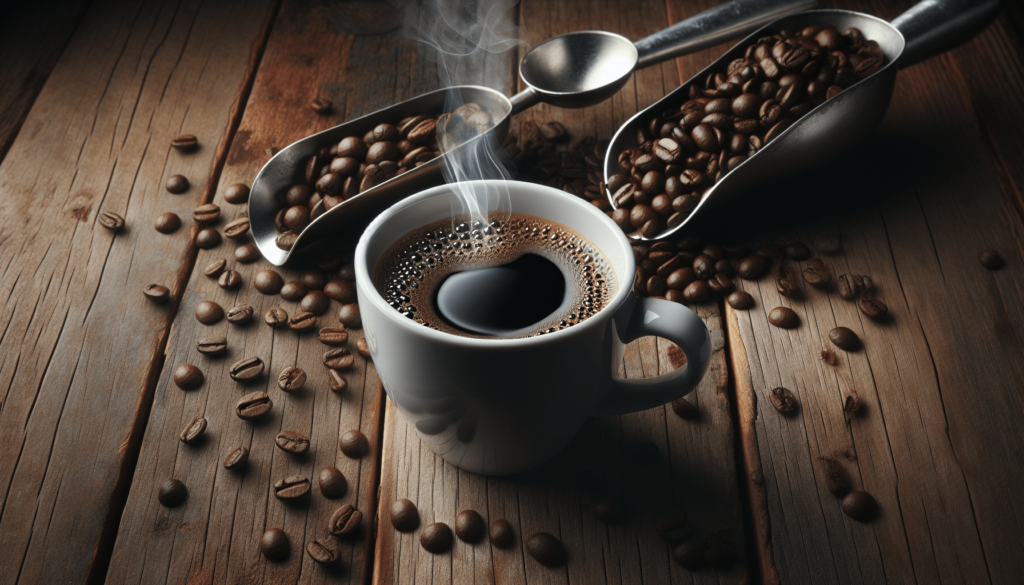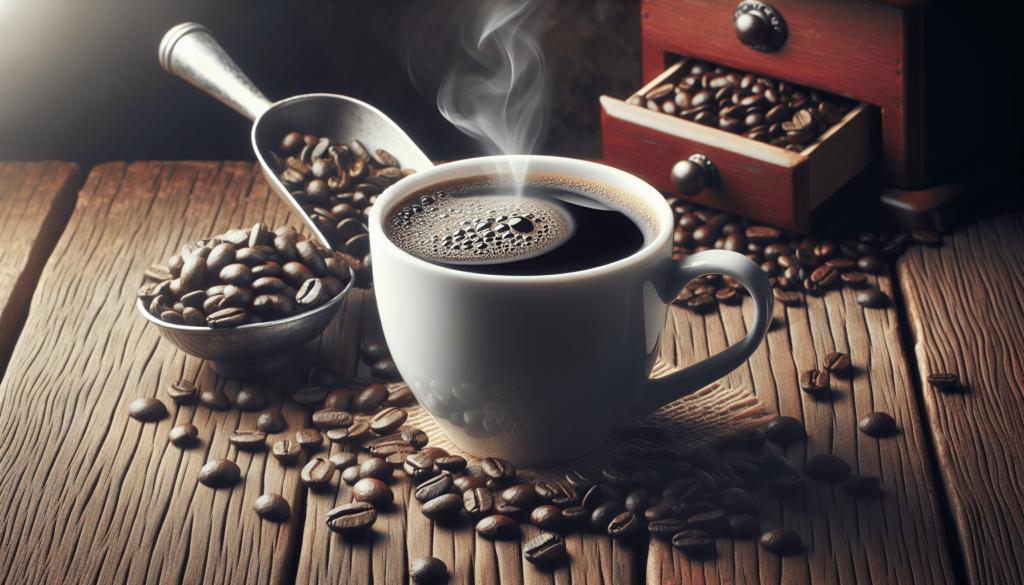Does brewing coffee strong make it have more caffeine? It’s a question you might have pondered while preparing your morning cup. The idea of starting your day with an extra kick can be tempting, but does making your coffee stronger truly increase its caffeine content? Let’s uncover the nitty-gritty of coffee brewing and understand how it influences the caffeine levels in your cup.
Understanding Coffee Strength and Caffeine Content
What Is Coffee Strength?
First, let’s define what we mean by “coffee strength.” When people talk about strong coffee, they usually refer to the flavor intensity, which can result from various factors such as the coffee-to-water ratio, grind size, brew time, and brewing method. Strong coffee is not synonymous with high caffeine content—it primarily reflects how concentrated the coffee tastes.
What Is Caffeine?
Caffeine is a natural stimulant found in coffee beans, known for its ability to boost alertness and stave off fatigue. The caffeine content in coffee can depend on several factors, including the type of coffee bean, the roast level, and the brewing method.
The Coffee-to-Water Ratio
How Does the Coffee-to-Water Ratio Affect Caffeine Content?
One of the most common ways to brew stronger coffee is to adjust the coffee-to-water ratio. By using more coffee grounds and less water, you get a more intense flavor. However, does this mean more caffeine?
| Coffee-to-Water Ratio | Flavor Strength | Caffeine Content |
|---|---|---|
| 1:15 | Mild | Moderate |
| 1:12 | Bold | Higher |
| 1:10 | Strong | Highest (But limited by solubility) |
Solubility: The Limiting Factor
Even though adding more coffee grounds can increase the caffeine content up to a point, the solubility of caffeine in water limits how much can be extracted. Beyond a certain concentration, no more caffeine will dissolve, meaning more coffee grounds will not necessarily result in higher caffeine content.

Bean Type and Roast Level
Arabica vs. Robusta
The type of coffee bean significantly impacts caffeine content. Robusta beans generally contain more caffeine than Arabica beans. If you aim for more caffeine, simply opting for Robusta might be more effective than making your brew stronger.
| Coffee Bean Type | Average Caffeine Content (mg per 8 oz) |
|---|---|
| Arabica | 85 |
| Robusta | 140 |
Light Roast vs. Dark Roast
There’s a common misconception that dark roasted beans contain more caffeine due to their intense flavor. In reality, the caffeine content decreases slightly with longer roasting times. Lighter roasts generally hold on to more caffeine.
| Roast Level | Average Caffeine Content (mg per 8 oz) |
|---|---|
| Light Roast | 95 |
| Medium Roast | 90 |
| Dark Roast | 85 |
Brewing Methods and Their Impact
Drip Coffee vs. Espresso
Different brewing methods extract caffeine differently. For example, a standard 8-ounce cup of drip coffee has more caffeine than a 1-ounce shot of espresso, even though espresso is more concentrated.
| Brewing Method | Average Caffeine Content (mg per 8 oz) |
|---|---|
| Drip Coffee | 95 |
| Espresso (1 oz) | 63 |
Cold Brew vs. Hot Brew
Cold brew coffee often has more caffeine than hot brewed coffee due to the extended extraction time. The cold water requires more grounds and longer brewing time to extract caffeine efficiently.
| Brewing Method | Average Caffeine Content (mg per 8 oz) |
|---|---|
| Hot Brew Coffee | 95 |
| Cold Brew Coffee | 125 |

Factors Affecting Caffeine Extraction
Grind Size
The grind size of your coffee affects how quickly caffeine is extracted. Finer grinds usually extract more caffeine in a shorter amount of time, making them ideal for methods like espresso. Coarser grinds, used in methods such as French press, take longer to extract caffeine but often yield a richer flavor.
Brewing Time
Brewing time influences how much caffeine is extracted from the coffee grounds. Longer brewing times usually result in higher caffeine content, but they can also lead to over-extraction, causing bitter flavors.
Water Temperature
The temperature of the water used for brewing also plays a critical role. Water that is too hot can over-extract and create a bitter taste, while water that is too cool may under-extract, leading to weaker coffee. The optimal temperature for caffeine extraction is generally between 195°F to 205°F.
Practical Tips for Controlling Caffeine Content
Choosing the Right Beans
If you’re looking to increase your caffeine intake, start by choosing Robusta beans or a blend that includes Robusta. Arabica beans are great for those who prefer less caffeine without sacrificing flavors.
Adjusting the Coffee-to-Water Ratio
For a stronger cup with more caffeine, try increasing the amount of coffee grounds relative to water. However, balance is key, as adjusting too much can lead to a cup that’s either overly bitter or under-extracted.
Optimal Grind Size and Brew Time
Experiment with grind size and brewing time to find your ideal caffeine level. Finer grinds and longer brew times generally increase caffeine extraction but can also alter the flavor profile.
Considering Different Brewing Methods
Different brewing methods offer different caffeine contents. For a caffeine-rich brew, consider methods like cold brew or aeropress, which can extract more caffeine compared to other methods.
Common Misconceptions about Coffee and Caffeine
“Darker Roasts Have More Caffeine”
The idea that dark roasts contain more caffeine is a widespread myth. The roasting process slightly reduces caffeine content, so lighter roasts can actually have more caffeine.
“Stronger Taste Equals More Caffeine”
Just because coffee tastes stronger doesn’t mean it contains more caffeine. Strong flavors can result from various factors, including the coffee-to-water ratio and brewing method, rather than caffeine content.
“All Brewing Methods Yield the Same Caffeine Content”
Different brewing methods extract caffeine at different rates. Methods like cold brew and espresso have higher caffeine concentrations compared to drip coffee, but the total caffeine content can vary depending on serving size.
The Health Impacts of Caffeine
Positive Effects
Caffeine provides several benefits, including improved mental alertness, better concentration, and enhanced physical performance. Moderation is key, as excessive caffeine intake can lead to jitteriness and insomnia.
Negative Effects
Consuming too much caffeine can lead to health issues such as insomnia, digestive issues, and increased heart rate. It’s essential to manage your caffeine intake, especially if you’re sensitive to its effects.
Recommended Daily Intake
The general recommendation for moderate caffeine consumption is up to 400 mg per day for most adults, which is roughly equivalent to four 8-ounce cups of coffee. Individual tolerance can vary, so it’s crucial to listen to your body and adjust accordingly.
| Age Group | Recommended Daily Intake |
|---|---|
| Adults | Up to 400 mg |
| Pregnant Women | Up to 200 mg |
| Adolescents | Up to 100 mg |
Conclusion
So, does brewing coffee strong make it have more caffeine? The answer isn’t straightforward. While increasing the coffee-to-water ratio can raise caffeine content initially, there are limits to how much caffeine can be extracted due to solubility. Other factors like bean type, roast level, grind size, and brewing method also play significant roles.
By understanding these variables, you can better control the caffeine content of your coffee to suit your needs. Whether you’re looking for a powerful caffeine kick or a milder cup, understanding the intricacies of coffee brewing can help you achieve your perfect brew.
